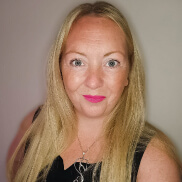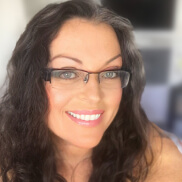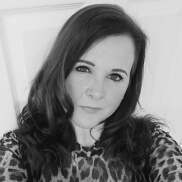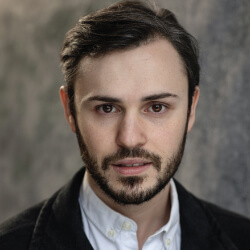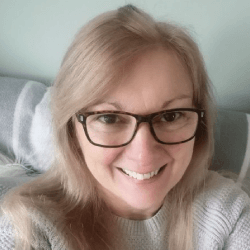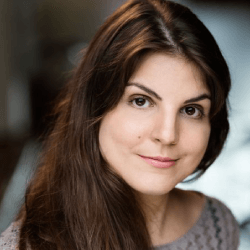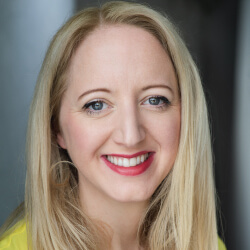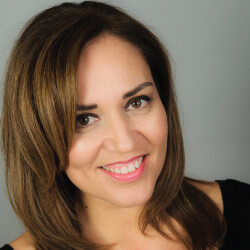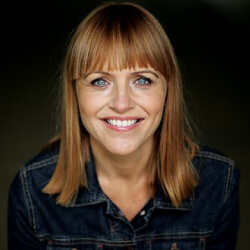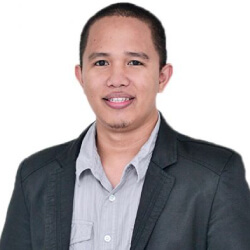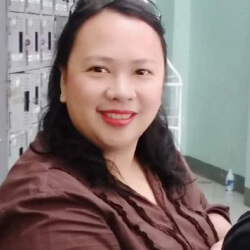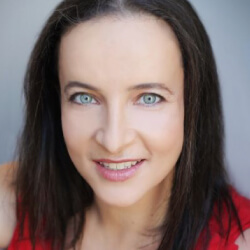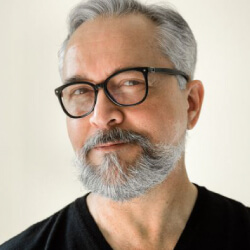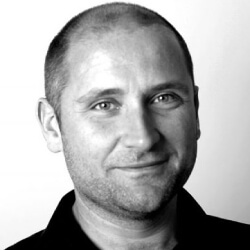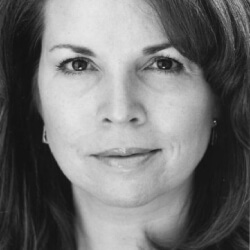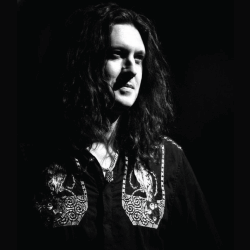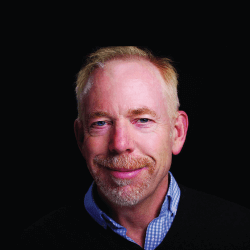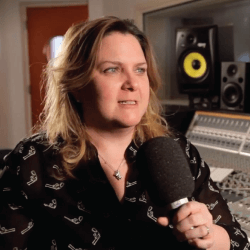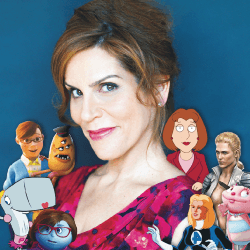GET YOUR GAME ON Los Angeles 2024’s Jeremy Hall sat down for an exclusive interview with The Buzz Magazine.
Check out his insightful perspective of the voiceover industry and discover his passion for voice acting for video games…
Hi Jeremy, thanks so much for talking to us. You have a vast and impressive career, spanning from voice actor, to coach to casting director and working with some of the greats studio-wise. Please tell us more about your background in the industry and how you got to where you are today.
Jeremy: Hello, and thanks so much for having me! As for my background, I started out going to college and grad school for acting and then working in theatre for a number of years, here in LA as well as in NYC. I started in video games simply as a QA tester, as it was a great day job for an actor. Once I got more involved with the audio team, I was brought on as ‘the dialogue guy’ due to my acting experience and started learning the ropes of video game dialogue. This was back in the late 90’s/early 2000’s at Electronic Arts Los Angeles, where I learned how to integrate dialogue into a game, then moved onto going into the studio to help direct and eventually casting. In 2009, I went to Insomniac Games and was in charge of all casting/recording/integration until I left to go freelance in 2018. At Insomniac, I had started voice directing as well and had the privilege of working on so many great games with so many talented actors. I’ve also continued voice acting myself, in games as well as commercial and animation – so it’s been a really great time working on both sides of the glass.
Can you share some of your experiences voice-directing hit titles such as Marvel’s Spider-Man, Ratchet and Clank, and Fortnite?
 Jeremy: Those games were all incredibly fun and vastly different from each other. Ratchet and Clank is such a family affair – the main cast and creative team have been basically the same since before I got to Insomniac, so everybody knows each other and their roles so well. It’s like putting on a comfy sweater. Spider-Man was by far the biggest game Insomniac had attempted at the time, and we knew it was something special. The sheer amount of work that went into the recording and integrating of that game was staggering, though, and we were still a pretty small studio at the time. Some days, Kris Zimmerman Salter (a fantastic director who taught me so much) would be on the performance capture stage directing the cinematic sequences, where Yuri Lowenthal, who played Peter Parker/Spider-Man, would be doing these big, movie-esque, cinematic moments – then he’d run over to the studio where I’d be directing him for the in-game lines – which he had to record two versions of (one as if he was swinging, and one if he was standing still), as we couldn’t control where he would be when the line was triggered. It was a little nuts, but wow does it work well in the game. I came in as a guest director on Fortnite – recording brilliant actors like Ashly Burch, and the scripts were so bonkers fun. The Fortnite folks also really encouraged improv and going for whatever comedy we could find, so it was a blast playing around with the lines and seeing what made us laugh the most. This was another case of a cast that had done multiple sessions for the game before and really knew the characters and where they could take them – so my main job there was to not get in the way of the story they’re telling and just encourage new discoveries with the copy.
Jeremy: Those games were all incredibly fun and vastly different from each other. Ratchet and Clank is such a family affair – the main cast and creative team have been basically the same since before I got to Insomniac, so everybody knows each other and their roles so well. It’s like putting on a comfy sweater. Spider-Man was by far the biggest game Insomniac had attempted at the time, and we knew it was something special. The sheer amount of work that went into the recording and integrating of that game was staggering, though, and we were still a pretty small studio at the time. Some days, Kris Zimmerman Salter (a fantastic director who taught me so much) would be on the performance capture stage directing the cinematic sequences, where Yuri Lowenthal, who played Peter Parker/Spider-Man, would be doing these big, movie-esque, cinematic moments – then he’d run over to the studio where I’d be directing him for the in-game lines – which he had to record two versions of (one as if he was swinging, and one if he was standing still), as we couldn’t control where he would be when the line was triggered. It was a little nuts, but wow does it work well in the game. I came in as a guest director on Fortnite – recording brilliant actors like Ashly Burch, and the scripts were so bonkers fun. The Fortnite folks also really encouraged improv and going for whatever comedy we could find, so it was a blast playing around with the lines and seeing what made us laugh the most. This was another case of a cast that had done multiple sessions for the game before and really knew the characters and where they could take them – so my main job there was to not get in the way of the story they’re telling and just encourage new discoveries with the copy.
What has been your greatest moment or proudest achievement so far in the industry? Who or what is an inspiration for you?
Jeremy: That’s a tough one – every project I’ve been lucky enough to be involved in has taught and inspired me in some way. Getting to direct Jeff Goldblum and Laura Dern as their iconic characters in Jurassic World Evolution 2 was definitely a memorable one, though, for sure. I’m also extremely proud to have been brought in to help Amanda Wyatt direct Ghost of Tsushima – I’ll never forget watching the first trailer for that game before I’d gotten involved, and being absolutely blown away by the look and feel of it. Then being asked later to be part of it was mind-blowing. The care and time they allowed us to really find and bring out the best performances from that cast was special. I’m continually inspired as an actor and director by watching the really great ones in the industry – and getting a front-row seat either as an actor being directed by someone like Kal-El Bogdanove, or directing someone like Debra Wilson is something I don’t take for granted. What’s maybe even more inspiring, though, is getting to teach young, aspiring actors who are doing all they can to get into this business. There are so, so many crazy talented artists out there that are working so hard to improve their craft, and working with them is my absolute favorite thing to do.
We’re super excited to have you speaking at The VoiceOver Network’s GET YOUR GAME ON event in Los Angeles (#GYGOLA24) in November where you’ll be conducting a “Mastering The Art of Video Game Voice Acting” INTENSIVE Weekend #VONWorkshop! What attracted you to being involved with GYGOLA and what are you looking forward to about the event?
Jeremy: Well, I’ve been friends with Rachael Naylor for several years after meeting her at VO Atlanta and heard how great the GYGO events have been. Everything is so well organized and puts the actor front and center – so I was very excited to be asked to participate. I’m looking forward to meeting new friends, listening to the other speakers and just taking it all in!
Can you give us a taster of what’s to come in your INTENSIVE Weekend #VONWorkshop @ #GYGOLA24, perhaps top tips regarding video game voice acting?
Jeremy: I approach directing and coaching first and foremost as an actor, and what surprised me the most when I started was how many VO actors rely on ‘voices’ and vocal gymnastics to create a character. It’s as if the overall strategy of an audition was to say “Look how far away from my voice this is!” and that the creative spark is rooted in trying to make your voice, your unique element that no one but you can do, as hidden as possible. Casting directors hear hundreds of auditions for the same role in a very short period of time. What makes your audition stand out? It’s not the character in your voice, it’s YOUR voice in the character. I concentrate on that, first and foremost, always.

What do you love about the industry and video game voice acting in particular?
Jeremy: The VO industry is filled with warm, genuinely good humans – from the very top people in the industry down to people just starting out. Everybody wants everyone to succeed and revels in their successes. I don’t know another entertainment industry that’s like that. We compete with each other, but never against each other. Also, we can audition in our pajamas. How fun is it to wake up, walk into my little booth, and play. Video game voice acting is particularly exciting as there are SO MANY different characters/worlds that games occupy. Each new game is something different and exciting – and often has surprising elements that I’ve never seen before. It’s undeniably a time of uncertainty in the video game industry with all the studio closures, layoffs, and game cancellations – but through all of that, really creative, exciting games are still being created, cast, and brought to life every day. It’s a medium loaded with so much passion and creativity, that it cannot and will not be diminished.

What is the most important thing for voice actors to bear in mind when auditioning for video game voice acting roles?
Jeremy: As I mentioned earlier, put your energy into bringing your own voice to the table…
Unlock The Full Article In Edition 34 Of The Buzz Magazine!
Here’s a sneak peek of what’s inside:
- 🎨 Exclusive Interviews: We’ve got #GYGOLA24 speakers Tony Rescigno and Jeremy Hall sharing their insights and wisdom.
- 🏳️🌈 Celebrating Diversity: Dive into our feature on inclusivity in the VO industry and the vibrant ways our community is embracing diversity.
- 🌈 Colour in VO: Learn how our VON members are bringing ‘colour’ to their roles, auditions, and environments.
- 🧠 Synaesthesia in VO: Discover the fascinating world of VO actors who experience colours through their senses – hearing, tasting, and even ‘feeling’ them.
- 🤖 AI & Industry News: Get the latest updates on the SAG-AFTRA strike and how it’s impacting our industry.
- 🎙️ Actionable Advice & Tools: From favourite VO equipment to practical advice like colour-coding your scripts and branding your business through social media, we’ve got you covered!
How to Read the Latest Edition:
Become a VO Starter or Above member of The VoiceOver Network to get exclusive access to The Buzz Magazine and all previous editions, available to read whenever you like!
Join The VoiceOver Network
Imagine having this treasure trove of knowledge and inspiration at your fingertips, ready to help you level up your VO career at any time.
Get ready to unlock all the exclusive content and benefits.
As a subscriber, you’ll stay connected with the latest trends and best practices, helping you to grow and succeed in your VO career.
JOIN now or Subscribe to our digital edition today and discover the buzzing VON community.
Ready to Take Your Voiceover Game to the Next Level?
We hope you enjoyed this incredible blog post and found it as exciting as a perfectly executed vocal warm-up!
But why stop there? Your voice deserves even more amazing opportunities to shine, and we’ve got just the thing to help you reach new heights.
Here’s how you can keep the momentum going and supercharge your voiceover journey:
The VoiceOver Network – 🌟 Join The Ultimate VO Community 🌟
- Connect with fellow voiceover artists and actors who share your passion.
- Gain exclusive access to top-notch resources, industry insights, and a supportive network ready to cheer you on.
- Dive into our treasure trove of member-only content, including advanced techniques and career-boosting tools!
👉 Join The VoiceOver Network Now!
Sign Up for a #VONWebinar – 🚀 Unlock Expert Tips and Tricks 🚀
- Our FREE webinars are like having a personal voiceover coach at your fingertips.
- Learn from industry pros, get insider knowledge, and discover new techniques that will make your voice stand out.
- Whether you’re just starting out or a seasoned pro, there’s a #VONWebinar with your name on it!
📅 Register for Our Next #VONWebinar
Book a #VONWorkshop – 🔥 Transform Your Skills with Hands-On Training 🔥
- Immerse yourself in interactive workshops designed to elevate your voiceover skills.
- Get real-time feedback, practice with professionals, and refine your techniques.
- Perfect for anyone looking to dive deep and gain practical, actionable advice.
🎟️ Secure Your Spot in a #VONWorkshop Today!
Don’t miss out on these fantastic opportunities to enhance your voiceover career. Whether you’re looking to connect, learn, or transform your skills, we’ve got something for you!
Ready to make your voice heard?
Join us, and let’s turn those vocal dreams into reality! 🎙️
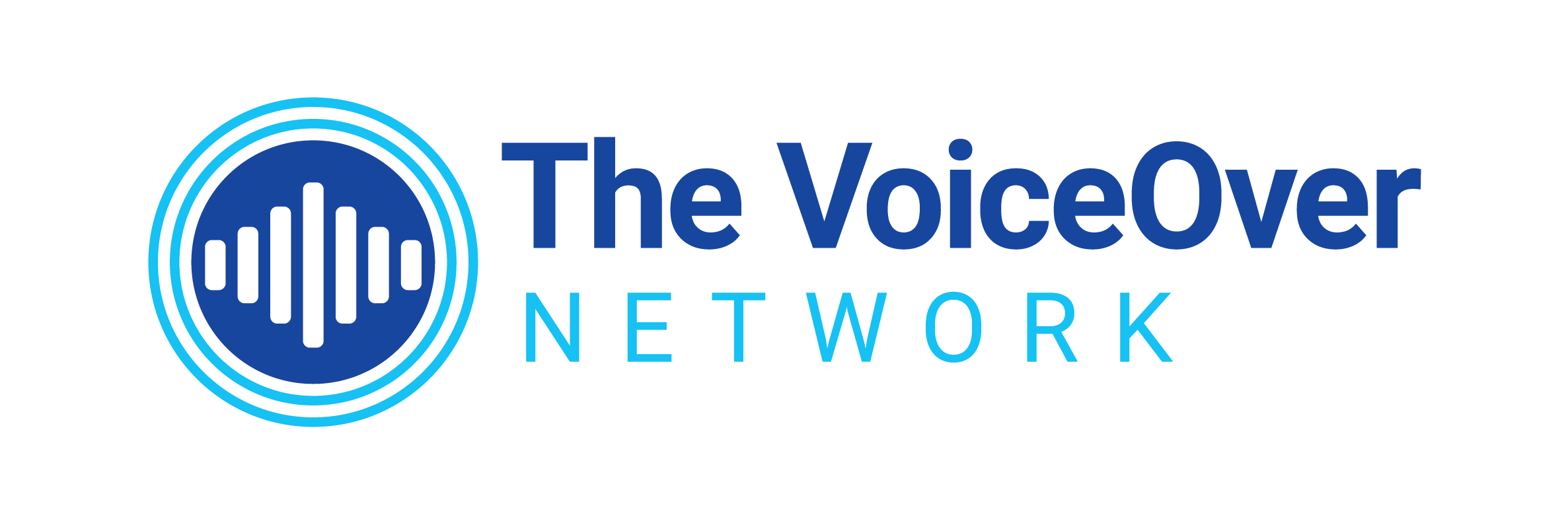

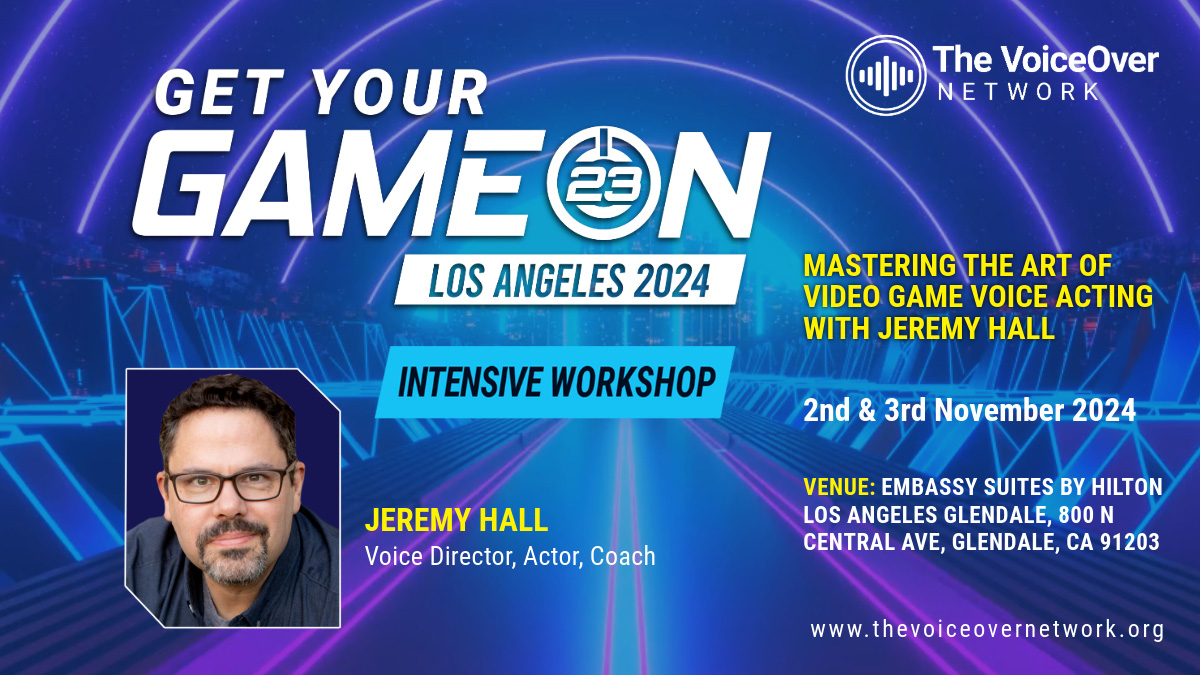












 Step 2: Setting Up Your Home Studio
Step 2: Setting Up Your Home Studio





 Another development in the audiobook world is with immersive audio experience, with the incorporation of spatial audio and 3D soundscapes. This technology creates a multi-dimensional listening environment, making stories feel more alive and engaging. By placing sounds in a three-dimensional space, listeners can experience audiobooks in a way that mimics real-life auditory experiences. This innovation is particularly popular in genres like thriller, fantasy, and sci-fi, where sound effects and background ambiance can significantly enhance the storytelling. Super cool.
Another development in the audiobook world is with immersive audio experience, with the incorporation of spatial audio and 3D soundscapes. This technology creates a multi-dimensional listening environment, making stories feel more alive and engaging. By placing sounds in a three-dimensional space, listeners can experience audiobooks in a way that mimics real-life auditory experiences. This innovation is particularly popular in genres like thriller, fantasy, and sci-fi, where sound effects and background ambiance can significantly enhance the storytelling. Super cool. The audiobook industry is also making significant strides in improving accessibility for all listeners. Innovations include better compatibility with screen readers, customizable playback speeds, and enhanced navigation features. Additionally, more audiobooks are being produced in multiple languages and dialects, broadening their reach and inclusivity. Publishers are also focusing on diverse voices and stories, ensuring that the audiobook catalog represents a wide array of cultures and perspectives.
The audiobook industry is also making significant strides in improving accessibility for all listeners. Innovations include better compatibility with screen readers, customizable playback speeds, and enhanced navigation features. Additionally, more audiobooks are being produced in multiple languages and dialects, broadening their reach and inclusivity. Publishers are also focusing on diverse voices and stories, ensuring that the audiobook catalog represents a wide array of cultures and perspectives.

